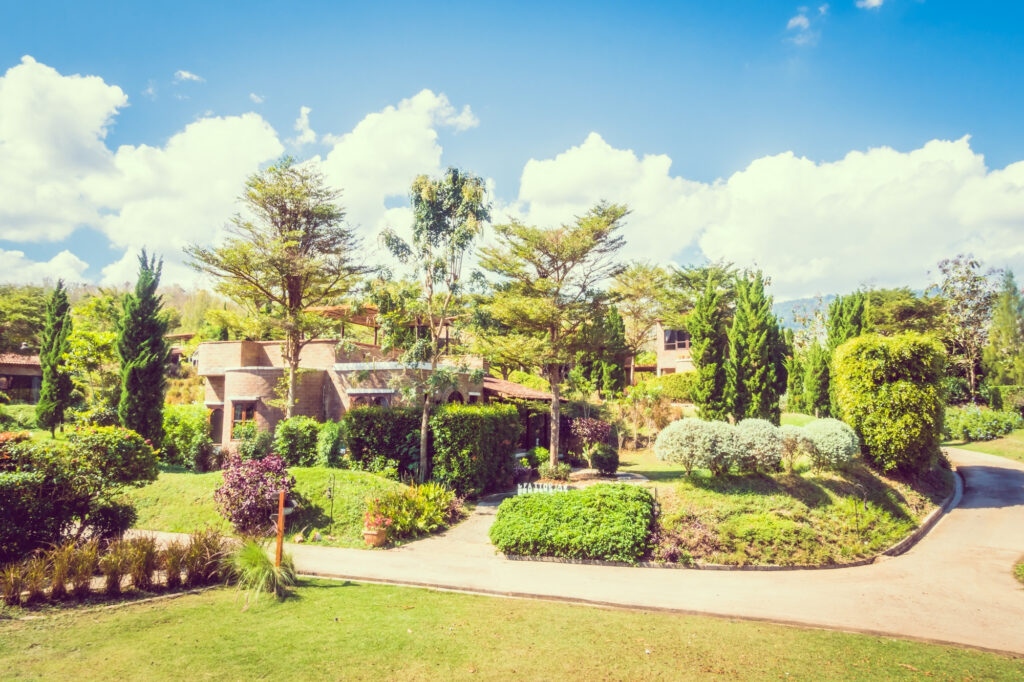Ornamental grasses are a fantastic addition to any garden. They add texture, movement, and year-round interest to your landscape. Whether you have a small balcony garden, a medium-sized yard, or a sprawling estate, there are ornamental grasses to suit every need and preference. These low-maintenance plants thrive in various conditions and can transform your garden with their subtle beauty and elegant form.
In this article, we’ll explore different types of ornamental grasses suitable for every garden size, their benefits, and how to use them effectively in your garden design. You’ll also find planting and care tips to ensure your grasses thrive throughout the year.
Table of Contents
ToggleBenefits of Using Ornamental Grasses in Your Garden
Before we dive into specific varieties, let’s look at why ornamental grasses are such a popular choice for gardeners of all levels:
1. Low Maintenance
Ornamental grasses are incredibly easy to care for. They require minimal watering and thrive in various soil conditions. Most varieties are drought-resistant and don’t require constant upkeep, making them perfect for busy gardeners.
2. Year-Round Appeal
Unlike many flowering plants that bloom only during specific seasons, ornamental grasses provide interest all year long. Their foliage changes color with the seasons, and many varieties produce beautiful, feathery plumes in late summer and fall.
3. Creates Movement and Texture
The gentle sway of ornamental grasses in the wind adds movement to the garden, creating a serene and calming atmosphere. Their fine textures and varying heights create contrast against other plants, making your garden visually dynamic.
4. Wildlife-Friendly
Ornamental grasses can attract beneficial insects and provide shelter for birds and small animals. They contribute to a balanced ecosystem, making your garden a haven for wildlife.
For more information on the benefits of ornamental grasses, visit the Royal Horticultural Society’s page on grasses.
Choosing the Right Ornamental Grass for Your Garden Size
Ornamental grasses come in a wide range of sizes, from low-growing ground covers to towering varieties that can serve as focal points. Choosing the right type for your garden depends on the available space and your landscaping needs.
Also Read: Top 5 Fall Home Decorating Trends in UK to Look Forward to in 2024
Small Gardens and Container Planting
If you have a small garden or want to add ornamental grasses to pots and containers, opt for compact varieties that won’t overwhelm the space. These grasses are perfect for adding greenery to balconies, patios, and small flower beds.

Ideal Grasses for Small Gardens:
- Blue Fescue (Festuca glauca)
- Height: 6-12 inches
- Features: Compact and tufted with blue-green foliage.
- Ideal For: Edging, rock gardens, and containers.
- Japanese Forest Grass (Hakonechloa macra)
- Height: 12-18 inches
- Features: Arching yellow-green leaves that add texture.
- Ideal For: Shady areas or as a ground cover.
- Carex (Carex morrowii)
- Height: 8-12 inches
- Features: Evergreen in mild climates with fine-textured leaves.
- Ideal For: Containers or small garden borders.
For more small garden ideas, visit Garden Design’s small garden section.
Medium-Sized Gardens
For medium-sized gardens, choose grasses that grow to a height of 2-4 feet. These varieties create structure and can be used in mixed borders or as standalone plants.

Recommended Grasses for Medium-Sized Gardens:
- Switchgrass (Panicum virgatum)
- Height: 3-5 feet
- Features: Upright growth with airy flower plumes that sway in the breeze.
- Ideal For: Adding height and structure to borders.
- Feather Reed Grass (Calamagrostis x acutiflora)
- Height: 3-5 feet
- Features: Vertical stems with feathery flower heads.
- Ideal For: Mixed borders or as a background plant.
- Little Bluestem (Schizachyrium scoparium)
- Height: 2-3 feet
- Features: Blue-green foliage that turns red and orange in fall.
- Ideal For: Prairie-style plantings or mixed borders.
Also Read: 12 Pergola Ideas to Enhance Your Backyard
Large Gardens and Landscapes
For large gardens or expansive landscapes, consider using tall ornamental grasses that can act as focal points or create natural screens. These grasses add drama and texture to large spaces.

Top Grasses for Large Gardens:
- Miscanthus (Miscanthus sinensis)
- Height: 4-8 feet
- Features: Tall, arching leaves with feathery flower plumes.
- Ideal For: Background plantings, screens, or large borders.
- Giant Reed Grass (Arundo donax)
- Height: 10-15 feet
- Features: Tall, bamboo-like stems and a dramatic presence.
- Ideal For: Creating natural privacy screens or adding a tropical feel.
- Pampas Grass (Cortaderia selloana)
- Height: 6-10 feet
- Features: Large, fluffy plumes and robust growth.
- Ideal For: Focal points or adding height to large borders.
For more details on ornamental grasses for large gardens, check out Fine Gardening’s guide.
Planting and Caring for Ornamental Grasses
Ornamental grasses are generally easy to grow, but following these planting and care tips will help them thrive and look their best throughout the year.
Planting Tips
- Choose the Right Location: Most ornamental grasses prefer full sun, but some varieties, like Japanese Forest Grass, thrive in partial shade. Check the specific requirements of the grass you choose.
- Soil Preparation: While grasses are adaptable, they prefer well-drained soil. Add compost or organic matter to improve soil quality before planting.
- Planting Time: The best time to plant ornamental grasses is in spring or early fall. This gives the plants time to establish roots before extreme weather conditions.
- Spacing: Leave enough space between plants to allow for mature growth. For small varieties, space them 12-18 inches apart, and for larger varieties, 2-3 feet apart is ideal.
Watering and Maintenance
- Watering: Water newly planted grasses regularly until they establish strong roots. Afterward, most varieties are drought-tolerant and only need occasional watering during dry spells.
- Pruning: Cut back ornamental grasses in late winter or early spring to remove old growth and encourage new shoots. Leave 2-4 inches of stubble above the ground.
- Fertilizing: Most grasses don’t require heavy fertilizing. A light application of balanced fertilizer in spring will support growth.
For a step-by-step planting guide, visit the Gardeners’ World website.
Also Read: Overwatering vs Underwatering: What to Look For in Your Home Garden?
How to Use Ornamental Grasses in Your Garden Design
Ornamental grasses are incredibly versatile and can be used in various ways to enhance your garden design. Here are a few ideas to get you started:
1. Create a Focal Point
Use tall varieties like Miscanthus or Pampas Grass as a focal point in your garden. Their height and dramatic plumes draw the eye and create a stunning visual impact.
2. Border Planting
Low-growing grasses like Blue Fescue or Carex make excellent border plants. They create neat edges and add a soft texture to pathways or flower beds.
3. Natural Privacy Screens
For larger gardens, use tall grasses like Giant Reed Grass or Switchgrass to create natural screens. These grasses provide privacy and can be used to divide different garden areas.
4. Add Movement to Garden Beds
Incorporate grasses like Feather Reed Grass or Little Bluestem in mixed borders to add movement and contrast. Their airy plumes and fine textures create a sense of lightness and flow.
5. Combine with Flowering Plants
Pair ornamental grasses with flowering perennials like Rudbeckia, Echinacea, or Lavender. The contrasting textures and colors create a vibrant and balanced display.
For more garden design inspiration, check out Garden Design’s website.
Final Thoughts: Why Ornamental Grasses Are Perfect for Any Garden
Ornamental grasses offer a unique combination of beauty, versatility, and low maintenance that makes them perfect for gardens of all sizes. Whether you want to add texture to a small garden, create movement in a medium-sized yard, or establish natural screens in a large landscape, there’s an ornamental grass for you.
Their ability to thrive in various conditions and provide year-round interest makes them a staple in modern garden design. Experiment with different varieties, mix them with flowering plants, and enjoy the serenity and beauty they bring to your outdoor space.
Ready to start your ornamental grass journey? Visit your local garden center or explore online retailers like Crocus for a wide selection of ornamental grasses.
Have you used ornamental grasses in your garden? Share your experiences and favorite varieties in the comments below!
FAQs: Ornamental Grasses for Every Size Garden
Ornamental grasses are a beautiful and versatile addition to gardens of all sizes, but you may have some questions about how to choose, plant, and maintain them. To help you make the most of these stunning plants, here are 10 frequently asked questions that provide deeper insights into choosing the right grasses, planting techniques, and using them effectively in your garden design.
1. What Are the Best Ornamental Grasses for Small Gardens or Containers?
The best ornamental grasses for small gardens or containers are compact varieties that don’t grow too tall or spread too aggressively. These grasses are perfect for adding greenery to patios, balconies, or small flower beds. Some great choices include:
- Blue Fescue (Festuca glauca): This compact, low-growing grass has blue-green foliage and forms neat mounds, making it perfect for borders and containers.
- Japanese Forest Grass (Hakonechloa macra): With its arching, bamboo-like leaves, this grass adds texture and color to shady areas. It’s a slow grower and doesn’t overwhelm small spaces.
- Carex (Carex morrowii): Carex, also known as sedges, are ideal for containers due to their clumping habit. They thrive in moist, well-drained soil and provide year-round interest.
Choose grasses that match your space and style, and consider pairing them with other low-growing perennials for added color and texture. For more small garden plant ideas, visit Garden Design’s small garden section.
2. What Are the Benefits of Planting Ornamental Grasses in My Garden?
Ornamental grasses provide numerous benefits, making them a valuable addition to any garden. Some of the key benefits include:
- Low Maintenance: Once established, most ornamental grasses require minimal care. They are drought-tolerant and resistant to pests and diseases.
- Year-Round Interest: Unlike many flowering plants, ornamental grasses offer visual appeal throughout the year with their changing foliage and graceful plumes.
- Soil Erosion Control: The root systems of many ornamental grasses are extensive and help prevent soil erosion, making them an excellent choice for slopes and hillsides.
- Wildlife Habitat: Ornamental grasses attract beneficial insects and provide shelter for small animals and birds, contributing to a healthy garden ecosystem.
For more details on the benefits of ornamental grasses, check out the Royal Horticultural Society’s advice page.
3. How Do I Choose the Right Ornamental Grass for My Garden Size?
Choosing the right ornamental grass for your garden size depends on the space available and the visual effect you want to create. Here’s a quick guide:
- Small Gardens: Opt for compact varieties like Blue Fescue, Japanese Forest Grass, or Carex. These grasses are small enough to fit into tight spaces and containers without overwhelming the area.
- Medium-Sized Gardens: Consider medium-height grasses like Switchgrass (Panicum virgatum) or Feather Reed Grass (Calamagrostis x acutiflora). They add structure to borders and mix well with perennials.
- Large Gardens: Use tall varieties like Miscanthus (Miscanthus sinensis) or Giant Reed Grass (Arundo donax) to create focal points, natural screens, or add drama to the landscape.
Think about the mature height, spread, and sunlight requirements of each grass before planting. For more recommendations, visit Fine Gardening’s guide on choosing ornamental grasses.
4. How Do I Plant and Care for Ornamental Grasses?
Planting and caring for ornamental grasses is straightforward, but following these tips will ensure they thrive:
Planting Tips:
- Location: Choose a spot that meets the sunlight requirements of your chosen grass. Most grasses prefer full sun, but some, like Japanese Forest Grass, thrive in shade.
- Soil: Ensure the soil is well-drained. If planting in clay soil, add compost or organic matter to improve drainage.
- Spacing: Plant grasses at appropriate distances to allow for mature growth. Space small grasses 12-18 inches apart, while larger varieties should be 2-3 feet apart.
- Watering: Water newly planted grasses regularly until they establish strong roots. Once established, most grasses are drought-tolerant and need minimal watering.
Maintenance:
- Pruning: Cut back grasses in late winter or early spring to remove old growth and encourage new shoots. Leave 2-4 inches of stubble above the ground.
- Fertilizing: Apply a light, balanced fertilizer in spring to support new growth. Avoid over-fertilizing, as it can cause grasses to become floppy.
5. Can Ornamental Grasses Be Grown in Shade?
Yes, some ornamental grasses can thrive in shady conditions, making them perfect for adding texture and movement to shaded areas of the garden. Recommended shade-tolerant grasses include:
- Japanese Forest Grass (Hakonechloa macra): This grass thrives in partial to full shade and adds beautiful golden or variegated foliage.
- Sedge Grasses (Carex spp.): Carex grasses can tolerate shade and moist conditions, making them ideal for woodland gardens or shaded borders.
- Tufted Hair Grass (Deschampsia cespitosa): This grass prefers partial shade and produces airy flower heads that add texture to the garden.
6. How Do I Use Ornamental Grasses in Garden Design?
Ornamental grasses are versatile and can be used in many ways to enhance garden design:
- Create Focal Points: Tall grasses like Miscanthus or Pampas Grass serve as eye-catching focal points in garden beds.
- Borders and Edging: Use low-growing grasses like Blue Fescue or Carex to create clean, soft edges along pathways or flower beds.
- Natural Screens: Plant tall grasses like Giant Reed Grass or Switchgrass in rows to create privacy screens or divide garden areas.
- Pair with Flowering Perennials: Combine grasses with flowering perennials like Echinacea or Lavender to create visually stunning contrasts in color and texture.
Experiment with different placements and combinations to create a balanced and dynamic garden layout. For more design ideas, check out Garden Design’s website.
7. Are Ornamental Grasses Drought-Tolerant?
Most ornamental grasses are highly drought-tolerant once established, making them an excellent choice for low-water gardens. Some of the best drought-tolerant grasses include:
- Feather Reed Grass (Calamagrostis x acutiflora)
- Blue Oat Grass (Helictotrichon sempervirens)
- Mexican Feather Grass (Nassella tenuissima)
- Purple Fountain Grass (Pennisetum setaceum ‘Rubrum’)
Drought-tolerant grasses require minimal watering, making them ideal for xeriscaping or regions with hot, dry climates. Ensure they are watered regularly during their first year to establish deep roots. For more on drought-resistant plants, visit Sunset’s guide on drought-tolerant landscaping.
8. Can Ornamental Grasses Be Used for Erosion Control?
Yes, many ornamental grasses have extensive root systems that help stabilize soil and prevent erosion. Their dense growth and spreading habit make them ideal for planting on slopes, hillsides, and areas prone to runoff. Recommended grasses for erosion control include:
- Switchgrass (Panicum virgatum)
- Big Bluestem (Andropogon gerardii)
- Indian Grass (Sorghastrum nutans)
Planting these grasses in areas susceptible to erosion can help improve soil stability and reduce water runoff.
9. What Common Pests and Problems Affect Ornamental Grasses?
Ornamental grasses are generally pest and disease-resistant, but a few common issues can arise:
- Rust and Fungal Diseases: Fungal diseases like rust can occur in humid conditions. To prevent this, ensure good air circulation and avoid overhead watering.
- Root Rot: Overwatering or poor drainage can lead to root rot. Ensure the soil is well-drained and avoid planting in low-lying areas where water can collect.
- Insect Infestations: In rare cases, ornamental grasses may attract aphids or spider mites. Use a mild insecticidal soap or neem oil to treat affected plants.
10. What Are Some Great Companion Plants for Ornamental Grasses?
Pairing ornamental grasses with the right companion plants can enhance your garden’s beauty and health. Here are some great companion plants to consider:
- Lavender: Complements grasses with its purple flowers and drought tolerance.
- Echinacea: Adds bold color and attracts pollinators.
- Rudbeckia: Bright yellow flowers contrast beautifully with green or blue grasses.
- Sedum: Low-growing succulents that work well in rock gardens or dry borders.
These companion plants offer contrasting colors and textures, creating a balanced and visually pleasing garden design. For more companion planting ideas, check out Better Homes & Gardens’ guide to companion planting.
